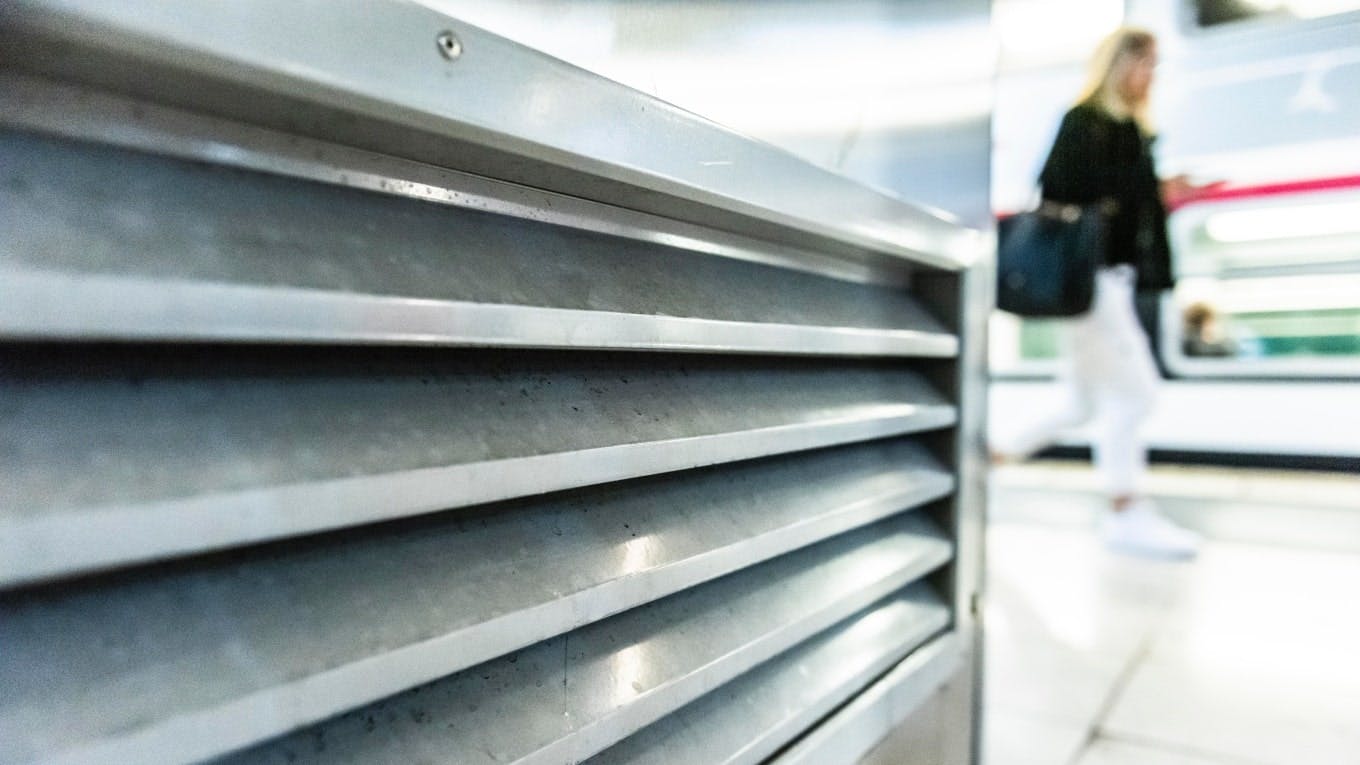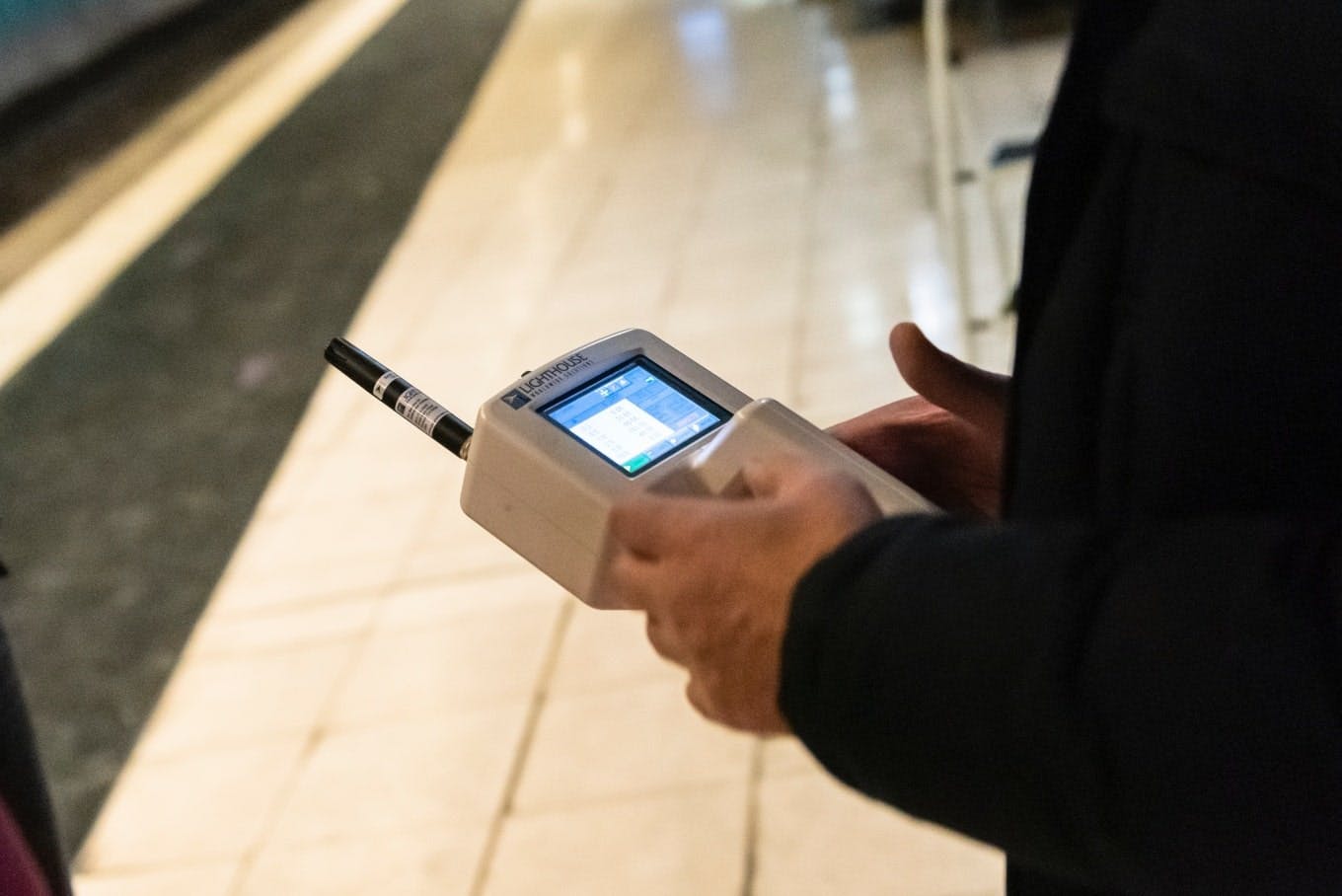Air quality in stations and underground stations: Île-de-France Mobilités is committed
Improving air quality: a continuous action plan
Improving and controlling air quality in metro and RER stations is an essential mission for Île-de-France Mobilités, which is working hand in hand with Air Parif (the air quality observatory in Île-de-France) to design an ambitious plan as well as concrete actions, implemented on the ground by the operators of the lines, RATP and SNCF Transilien.
A four-pronged plan, voted by the Board of Directors of Île-de-France Mobilités on 25 May 2022, which continues to be expanded and enriched as knowledge advances, standards evolve and technological progress:
- Better understanding of air quality
- Better informing the public
- Expand existing tools and test new ones
- Upgrading metro and RER trains to reduce sources of emissions

1. Improving knowledge of fine particles
An action plan: that's good. But knowing what you're looking for in order to provide relevant solutions is better.
This is why Île-de-France Mobilités and its operators RATP and SNCF Transilien will deploy tools to better understand the presence of fine and ultrafine particles in underground spaces.
The aim is to better identify the sources of emissions, understand the influencing factors and study the physicochemical characteristics of these particles.
Today, 8 sites are equipped with measuring stations*. These results will be supplemented by punctual measurements in the stations and in the trains with harmonised criteria in order to allow a more complete and regularly updated knowledge.
2. Improving public information in a transparent manner
At the heart of this project to improve air quality: transparency. With more data that will be available in Open Data, to better inform passengers.
At the same time, Île-de-France Mobilités is strengthening its partnership with Airparifin order to have independent scientific expertise, improve measurement methods, but also assess the solutions proposed by operators to recommend the most useful and effective actions.
In collaboration with AirParif and operators, Île-de-France Mobilités is launching in 2023:
- Measurement of particle levels at the ventilation outlet, for a more detailed analysis of air quality,
- Work is carried out to classify PM10 and PM2 particle levels in five of the RATP & SNCF underground railway enclosures, before the first results are expected at the end of 2023.

3. Develop existing tools and test new ones
More modern trains for healthier air
Better air quality in stations and underground stations also means trains that emit less particles. And precisely, the new metros put into service (MF01, MP05, MP14 and MF19) make it possible to drastically reduce the pollutants linked to "mechanical braking", which is one of the main sources of pollution in metro tunnels.
This modernization is spread over several years, until 2034. This is why Île-de-France Mobilités wants the two operators to experiment and develop new systems to reduce braking-related particle emissions by the end of the programme :
- New brake shoes and lining with lower particle emissions (Wabtec)
- A braking particle capture system currently being tested by the SNCF as part of the call for projects led by the Île-de-France Region (Tallano)
Ventilate, ventilate, ventilate!
To reduce the concentration of particles, one of the most effective responses is obviously to circulate air.
This is why, over the period from 2021 to 2024, Île-de-France Mobilités is financing the RATP and the SNCF Transilien, to the tune of 57 million euros, in order to increase and/or improve the ventilation systems!
About forty fans will be renewed or their ventilation capacity increased by 2024 in the areas operated by the RATP, and other fans will be added in Sevran-Beaudottes and Cergy-Préfecture, areas operated by the SCNF.
Various studies will be carried out and a new technology tested in order to increase the flow rate of the fans (bio-clip-on device).
In addition, the major works in progress will be an opportunity to concretely improve ventilation - for example, the renovation of the Saint-Michel Notre Dame station (on the RER C) which will make it possible to open bay windows on the banks of the Seine.
Encouraging innovation towards sustainable solutions
The action plan adopted by Île-de-France Mobilités also leaves a lot of room for innovation.
Following the Île-de-France Region's call for projects (2018-2021), several technologies were selected for their potential effectiveness.
Île-de-France Mobilités, RATP and SNCF Transilien have selected four pilot sites to experiment with the treatment of all the platforms of the same station with four different technologies :
- At Gare de Lyon (RER A), RATP will test a particle trapping solution
- Campo Formio (M5), RATP tests a particle-fixing product
- Porte de Clichy (REC C), experimentation of a mechanical filtration device (Mann+Hummel) with the SNCF from October 2023
- Neuilly Porte Maillot (RER C), experimentation of a water filtration system (Starklab) with the SNCF from the end of 2023
* Sevran-Beaudottes (RER B), Avenue Foch (RER C), Magenta (RER E), Auber (RER A), Châtelet (Line 4), Franklin Roosevelt (Line 1) and since January Nation (RER A) and Châtelet-Les-Halles (RER A).